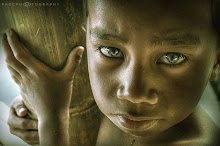History
For most of their history, the Bajau have been a nomadic, seafaring people, living off the sea by trading and subsistence fishing. The boat dwelling Bajau see themselves as non-aggressive people. They kept close to the shore by erecting houses on stilts, and traveled using lepa-lepa, handmade boats which many lived in. Although historically originating from the southern Philippine coasts, Sabahan Sama legend narrates that they had originated from members of the royal guard of the Sultan of Johor, after the fall of the Malay Malacca empire, who settled along the east coast of Borneo after being driven there by storms. Another version narrates that they were escorting the Sultan's bride, but the bride was later kidnapped by the Sultan of Brunei. The fact that the Bajau-Sama languages belong to the Philippine branch of Malayo-Polynesian languages would substantiate the anthropological origins of the Bajau groups to be from the Philippines, and put the origin legends down to the historic Malay-centric influence of Bajau culture.
Lists of Bajau sub-groups:
- Ubian (The largest group of Bajau. They reside on many islands of the Philippines and its seas, as well as sizable minorities living around the towns of Kudat and Semporna inSabah, Malaysia)
- Sama (commonly known as Bajau Kota Belud, because most of them live in or near area of Kota Belud, Sabah. This is actually a misnomer as they can be found all over the west coast of the state, and not just in Kota Belud.. They call themselves Sama, not Bajau and their neighbours, the Dusuns also call them Sama, not Bajau. It must have been the British administrators that define them as Bajau.
- Samah/Sama Sulawesi Selatan.
- Simunul (They can be found at Kampung Bokara, Sandakan, Semporna and Lahad Datu Towns. Simunuls in Sabah originate from Tawi-tawi, where they are still mostly found and are the majority there, and the only Bajau group that mostly has fair skin.)
- Samal (A group native to the Philippines.)
- Bajau Suluk / Mountain Warrior (This sub-group, live mostly in Kudat, and have origins in the Philippines, hence although living among Malay peoples for a substantial part of their history, are also able to converse in the Philippine Tausug and Samal languages.)
- Tando' Bas (This sub-group was rarely found in Sabah before 1970s. They had recently migrated to Sabah from a place called Tandobas in the Philippines)
- Ungus Matata (This sub-group was rarely found in Sabah before 1970s. They had recently migrated to Sabah from a place called Ungus Matata in the Philippine.)
- Tolen (This sub-group was found only at Bum-bum island, in Semporna, Sabah. No trace of them anywhere else even in the Philippines)
- Pala'u (This sub-group originally lived on boats all the time but recently in Sabah, some have settled on land.)
- Tabawan (This sub-group was rarely found in Sabah before 1970s. They have recently migrated to Sabah from a place called Tabawan, Tawi-tawi, Philippines)
- Banguingui (Native to the Philippines, where the majority still live. This sub-group was rarely found in Sabah before 1970s. Some have recently migrated to Sabah)
- Sikubung (This sub-group was rarely found in Sabah before 1970s. They had recently migrated to Sabah)
* My clan Bajau Simunul...
Bajau " Extraordinary"
Bajaus are also noted for their exceptional abilities in free-diving, with physical adaptations that enable them to see better and dive longer underwater. The Bajau often intentionally rupture their eardrums at an early age in order to facilitate diving and hunting at sea. Many older Bajau are therefore hard of hearing but some are not.












You have great pictures of the Sama/Bajau. Were you born in Malaysia? The different Sama people you mention in your post are almost all named after their island in the Philippines. We are trying to provide the most accurate information possible about the Sama/Bajau at our website Kauman Sama Online We have forum posts where the Sama/Bajau can explain their understanding on it. Of significant relevance to the topic is our post The Bajau, the Badjao, the Samals, and the Sama people.